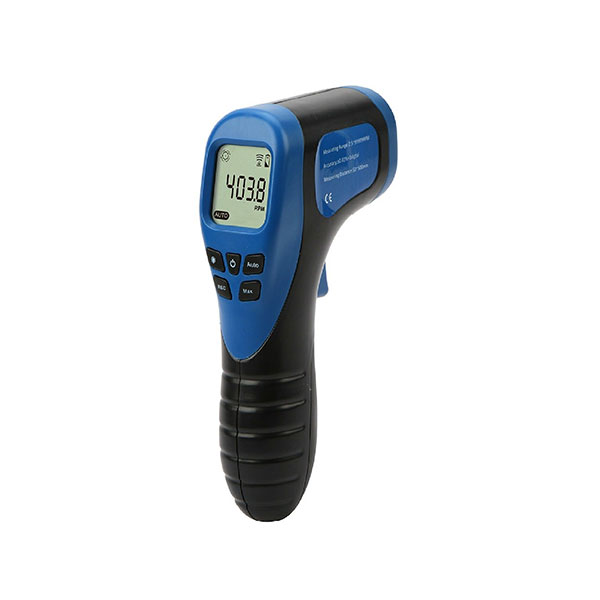Professional Tips for Keeping and Calibrating Your Tachometer
Professional Tips for Keeping and Calibrating Your Tachometer
Blog Article
The Importance of a Tachometer in Monitoring Engine Speed and Efficiency in Automotive Applications
In the world of auto design, the tachometer stands as a crucial instrument in the vehicle driver's toolbox, offering a direct window into the internal functions of an automobile's engine. Past its function as a simple gauge of transformations per min (RPM), the tachometer functions as a critical tool for fanatics and specialists alike, providing real-time understandings right into engine efficiency and wellness. Recognizing the relevance of this tool goes beyond surface-level observations, diving right into the complex relationship between engine speed, power output, and total driving experience. As we discover the complex role of the tachometer in automobile applications, a deeper gratitude for its effect on automobile characteristics and effectiveness starts to emerge.
Value of Checking Engine RPM
Checking engine RPM, or revolutions per minute, is a critical facet of vehicle upkeep and performance assessment. Engine RPM straight correlates with the speed at which the engine's crankshaft revolves, indicating exactly how swiftly the engine is running - tachometer. By checking RPM, auto mechanics can analyze the health and wellness of the engine, spot potential problems, and fine-tune performance. An uncommon RPM reading may indicate troubles such as engine misfires, damaged stimulate plugs, or problems with the fuel shipment system. Consistently high RPM readings can indicate hostile driving habits or the requirement for a greater gear change to enhance fuel efficiency.
In addition, monitoring engine RPM is crucial for efficiency examination in auto racing and high-performance vehicles. Maintaining optimum RPM levels is essential for attaining peak power output and velocity. Racers usually use tachometers to ensure they are operating within the excellent RPM range for maximum performance. In recap, checking engine RPM is not just important for finding issues but additionally for maximizing engine performance in different vehicle applications.

Benefits of Real-Time Data
In vehicle applications, real-time data plays an essential duty in giving immediate insights right into the performance and condition of the lorry. By continually monitoring numerous specifications such as engine rate, temperature, gas intake, and much more, real-time information provides countless benefits that add to enhanced efficiency and safety when traveling.
Furthermore, real-time data helps with efficiency optimization by giving instant comments on driving behaviors and engine performance. Motorists can change their behavior in real-time based on this info to accomplish far better fuel economy and extend the lifespan of their automobile.

Moreover, real-time information plays an essential duty in contemporary auto diagnostics, enabling technicians to promptly diagnose and attend to breakdowns. This leads to lowered downtime, lower upkeep prices, and eventually, boosted total vehicle integrity and longevity (tachometer). By using the power of real-time data, automotive stakeholders can make informed choices that positively impact both the efficiency and long life of the automobile
Effect On Equipment Shifts
The tachometer plays an important role in enhancing equipment shifts by providing real-time engine rate data to the driver. When coming close to the redline on the tachometer, it indicates the chauffeur to upshift to stop over-revving the engine and causing possible damage.
In addition, the tachometer help in attaining smoother gear transitions, check it out particularly in hand-operated transmissions. By checking engine rate, chauffeurs can carry out equipment changes at the optimum RPM range, lowering snagging movements and minimizing endure the transmission components. This accuracy in equipment changes not just boosts driving convenience but additionally adds to fuel performance.
Enhancing Gas Effectiveness
Offered the critical duty the tachometer plays in enhancing gear changes for efficiency and engine health and wellness, it straight adds to making the most of fuel performance in vehicle applications. By offering real-time responses on engine rate, the tachometer helps chauffeurs in maintaining one of the most efficient RPM variety for fuel economic climate. When chauffeurs continually keep an eye on the tachometer and change their driving habits accordingly, they can avoid unneeded fuel usage triggered by over-revving or lugging the engine.
Additionally, the tachometer aids chauffeurs determine one of the most fuel-efficient gear to be in at any kind of provided moment, stopping the engine from functioning tougher than necessary. This is particularly critical throughout acceleration and travelling, where remaining find here in the appropriate equipment can dramatically affect fuel performance. In addition, the tachometer can alert drivers to prospective mechanical concerns that could be adversely influencing fuel economy, such as a sliding clutch or a clogged up air filter. To conclude, the tachometer functions as a useful tool in enhancing gas performance by promoting ideal driving practices and recognizing locations for renovation in the lorry's efficiency.

Maximizing Engine Long Life
The tachometer's function in monitoring engine rate and efficiency is critical in guaranteeing the long life of automobile engines. By using the tachometer successfully, drivers can maximize engine longevity via conscious RPM administration. Consistently revving an engine expensive can cause extreme damage on important parts, such as the pistons, shutoffs, and bearings. With time, this can result in lowered engine performance and potential malfunctions. Keeping an eye on the tachometer allows drivers to remain within the advised RPM range for their automobile, stopping unneeded stress on the engine and expanding its lifespan.

Final Thought
In conclusion, the tachometer plays a vital function in monitoring engine rate and performance in vehicle applications. By providing real-time information on RPM, useful reference it allows for effective gear shifts, boosted fuel performance, and made best use of engine longevity. This device is essential for keeping optimal engine performance and making certain the overall capability of a vehicle.
Report this page